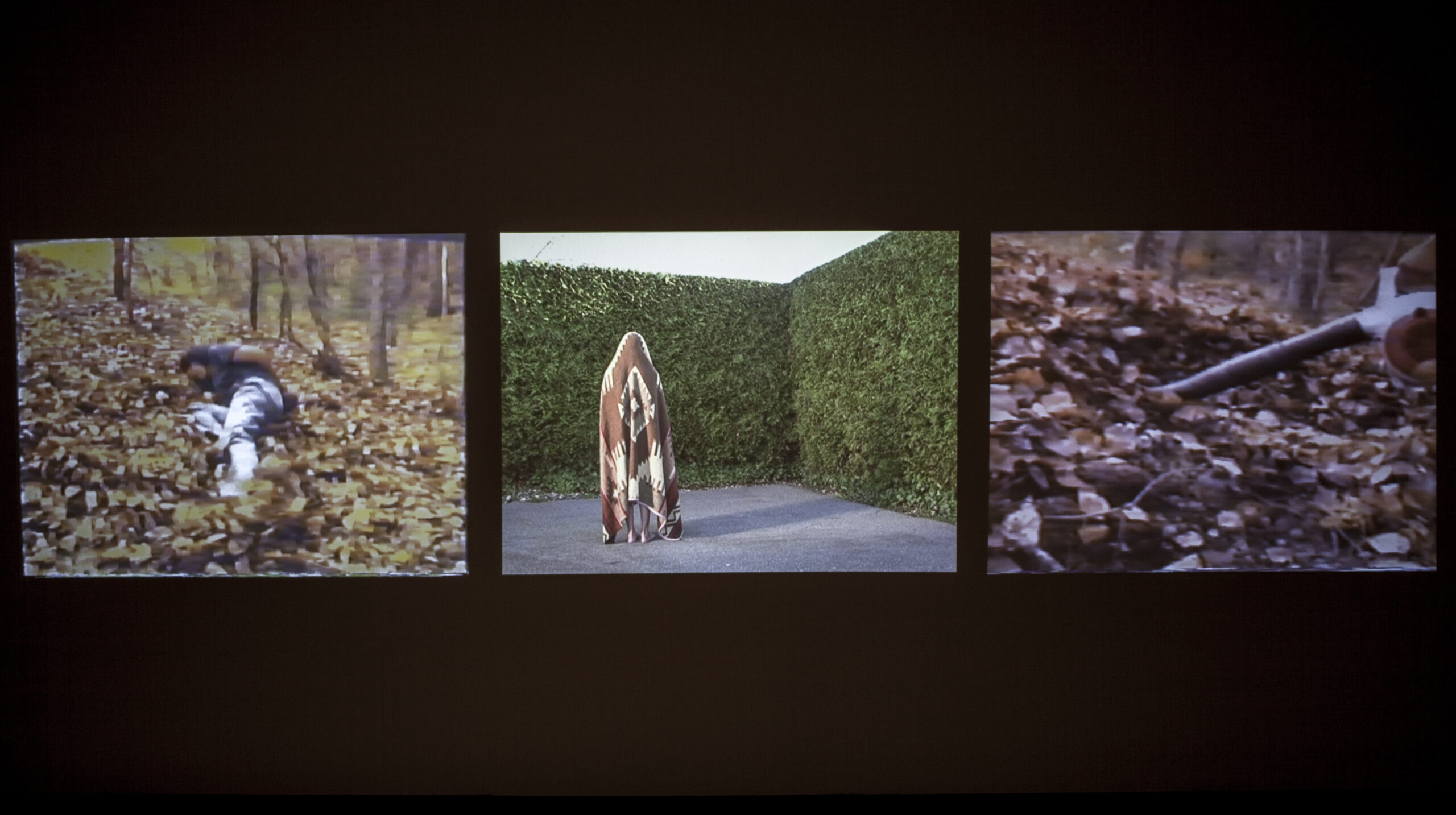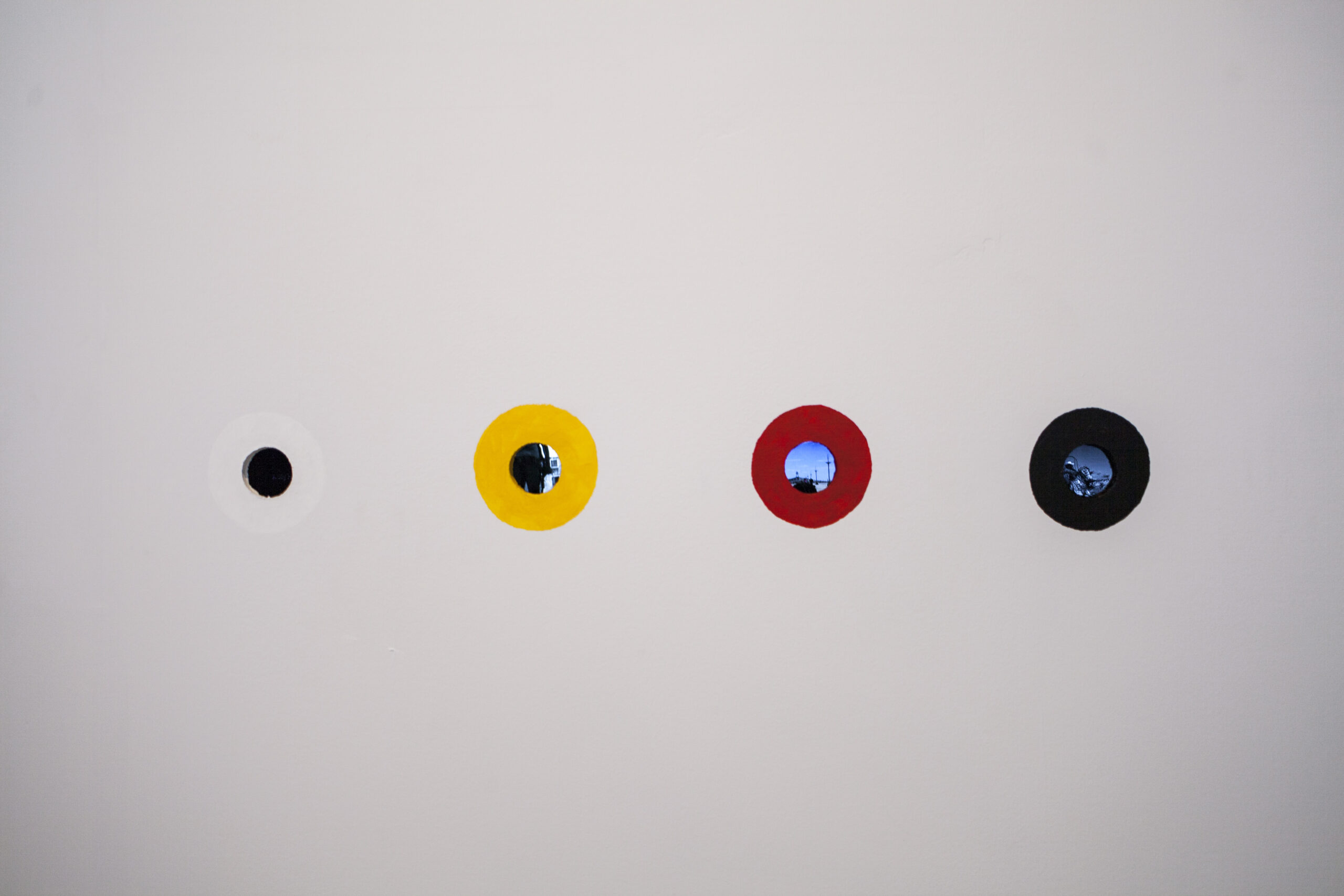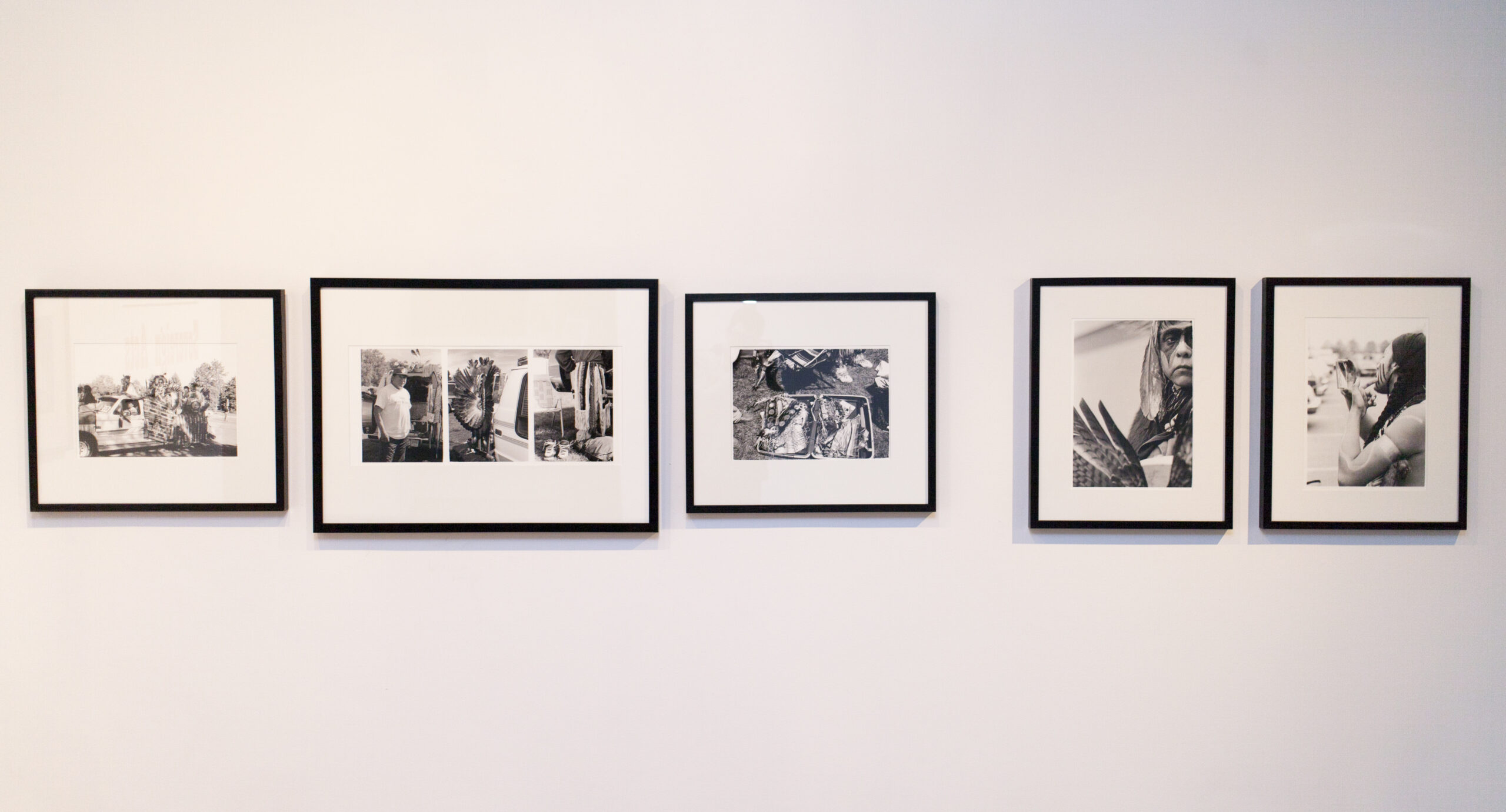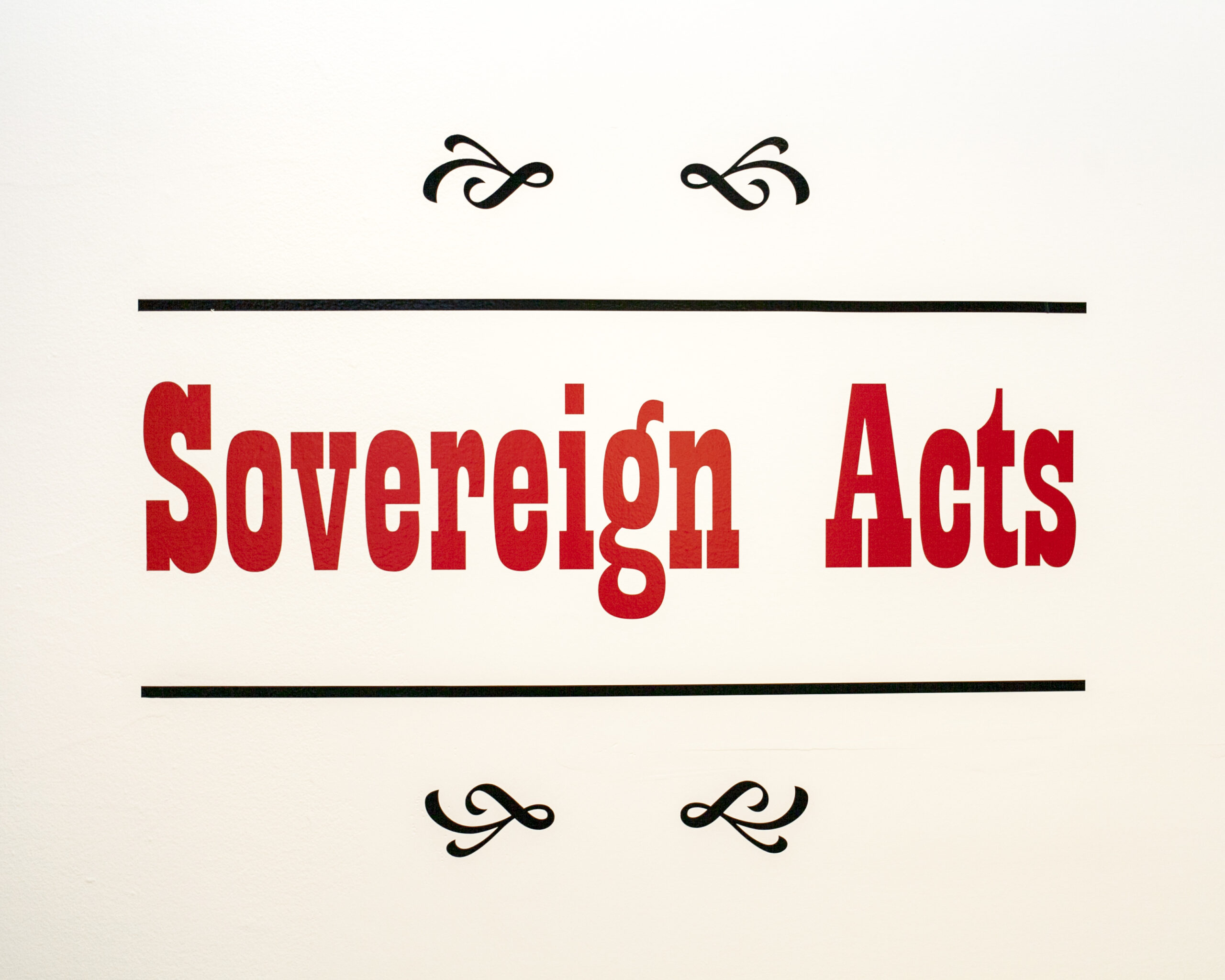Rebecca Belmore, Lori Blondeau, Terrance Houle, Shelley Niro, Adrian A. Stimson, Jeff Thomas
Wanada Nanibush (Curator)
February 22 – April 4, 2014
Reception: Saturday March 8, 8:00 p.m.
Everyone welcome!
“Sovereign Acts” is organized and circulated by the Justina M. Barnicke Gallery, Hart House at the University of Toronto.
Bios
Born is Upsala, Ontario, REBECCA BELMORE is an artist currently living in Vancouver, British Columbia. She attended OCAD University in Toronto and is internationally recognized for her performance and installation art. Since 1987, her multidisciplinary work has addressed history, place and identity through the media of sculpture, installation, video and performance. Belmore was Canada’s official representative at the 2005 Venice Biennale. Her work has appeared in numerous exhibitions both nationally and internationally including two solo touring exhibitions: The Named and the Unnamed, Morris and Helen Belkin Art Gallery, Vancouver (2002); and 33 Pieces, Blackwood Gallery, University of Toronto at Mississauga (2001).
LORI BLONDEAU is a Cree/Saulteaux/Mtis artist and curator based in Saskatoon. She is a co-founder and the current director of TRIBE, one of Canadas most innovative and exciting Aboriginal arts organizations. Blondeau’s performance, photo, and media-based works have been presented nationally and internationally. She is currently completing a PhD in Interdisciplinary Studies at the University of Saskatchewan. She has collaborated with artist James Luna on a series of installations and a performance titled Dead Fall Revue (2000). Her current work is a series of performances based on memory and home, displacement and decolonization. In 2006, Blondeau’s solo exhibition Grace showed at the Mendel Art Gallery in Saskatoon. She was part of the Requickening Project with Shelley Niro, presented during the 2007 Venice Biennale.
TERRANCE HOULE is an internationally recognized interdisciplinary media artist and a member of the Blood Tribe currently living in Calgary. A graduate of the Alberta College of Art and Design, Houle received his BFA in 2003. In 2008, Houle was a semifinalist for the prestigious Sobey Art Award. His work has been exhibited across Canada, the United States, Australia, Europe and England. His first major solo exhibition, GIVN’R, opened in 2009 at Plug In Institute of Contemporary Art in Winnipeg and was exhibited in 2010 at the Art Gallery of York University.
SHELLEY NIRO is a member of the Six Nations Reserve, Mohawk, Turtle Clan. Niro was born in Niagara Falls, New York in 1954 and currently lives in Brantford, Ontario. She graduated from OCAD University with honours in visual arts and received her MFA from the University of Western Ontario. In 2001, she became an Eiteljorg recipient at the Museum of Western and Indian Arts, Indiana. Niro participated in the 2003 Women in The Director’s Chair Program at the Banff Centre for the Arts. In the fall of 2006, Niro was selected to be a fellow with Women in Film and a recipient of a GM Accelerator Grant. Niro’s work can be found in the Canadian Museum of Civilization, Quebec; the National Gallery of Canada; the Canadian Museum of Contemporary Photography; the Portrait Gallery of Canada, Ottawa; the Rockwell Museum of Western Art, Corning, New York; the University of Seattle Library; and the National Museum of the American Indian, Washington, DC.
ADRIAN A. STIMSON is a member of the Siksika (Blackfoot) Nation in southern Alberta and a Saskatoon-based interdisciplinary artist. He has exhibited and performed nationally and internationally. His research has focused on identity, metaphysics, two-spirit people, ecology, spirit and healing modalities within artists’ practice. After completing his BFA at Alberta College of Art and Design in Calgary, Stimson moved to Saskatoon to complete a MFA at the University of Saskatchewan. Stimson was awarded the Queen Elizabeth II Golden Jubilee Medal in 2003 and the Alberta Centennial Medal in 2005 for his human rights and diversity activism in various communities.
JEFF THOMAS is an Onondaga artist and curator of the Six Nations Confederacy. He was born in Buffalo, New York, in 1956 and currently lives and works in Ottawa, Ontario. His photographic work raises issues of racial stereotyping and mutual misunderstanding through references to the histories, symbols, and actualities of urban-Indian experience. He has exhibited widely since 1979. In 2010, the Canadian Cultural Centre presented Unmasking: Arthur Renwick, Adrian Stimson, Jeff Thomas, as part of the Photoquai Visual Arts Biennial, organized by the Quai Branly Museum, Paris. Thomas had four solo shows in 2008: Commemoration, MacLaren Art Centre, Barrie; Whos your Daddy?: Four Hundred Years Later, Karsh/Mason Gallery, Ottawa; Dont Mess with the Pediment, Stephen Bulger Gallery, Toronto; Drive By: A Road Trip with Jeff Thomas, University of Toronto Art Centre. His curatorial exhibitions are research projects and community engagements involving land claims, residential school history and Indigenous art history. Thomas is represented by Stephen Bulger Gallery, Toronto.
WANDA NANIBUSH is an Anishinabe Kwe curator, writer and media artist. She is also the Executive Director of The Association for Native Development in the Performing and Visual Arts. As a curator, her work has largely concentrated on re-contextualizing Indigenous time-based media and performance art to examine the underlying philosophical complexity of the work, as well as rethinking how culture and identity are framed by contemporary artistic discourses. Her writing has been published in FUSE, Literary Review of Canada and This is an Honour Song: Twenty Years Since the Blockades. Somehow she finds time to finish her Masters degree at the University of Toronto.
SOVEREIGN ACTS
The history of Indigenous Peoples performing cultural dances and practices for international and colonial audiences is an important part of Indigenous art generally, and performance art specifically. The Indigenous performers known as “Indians” faced the conundrum of maintaining traditional cultural practices by performing them on stage while also having that performance fulfill the desires of a colonial imaginary. In Sovereign Acts, the artists Rebecca Belmore, Lori Blondeau, Robert Houle, Terrance Houle, Shelley Niro, Adrian Stimson, and Jeff Thomas, contend with the legacy of colonial representations. Drawing on the depiction of the imaginary Indianthe ahistorical, pre-contact “primitivism” in popular and mass culturethey recover and construct new ways of performing the complexity of Indigenous cultures for a contemporary art audience. Their work returns to the multi-levelled history of “Performing Indian” to recuperate the erased and objectified performer as an ancestor, an artist, and an Indigenous subject.
Sovereign Acts takes its point of departure from a new video installation by Vancouver-based Anishinabe artist Rebecca Belmore to loosely trace a history of Indigenous performance from the 18th century to the present. Belmore extrapolates on an earlier performance to take account of the exhibition’s location at the University of Toronto. In the Wilderness Garden (Banff, 1997) sees Belmore pay homage to a captive Mi’kmaw man who was forced to perform a deer hunt in a Victorian garden in the 1700s. The Mi’kmaw man extended his performance
by defecating after eating the deer, right in front of his 18th century audience. His act of resistance appropriated the idea of the “wild savage” to effectively defy the Victorian values of his “hosts.” Belmore reads the Mi’kmaw man’s action as the beginning of performance art, situating it within the trajectory of actions against the containment of Indigenous bodies and cultures.
Toronto-based Anishinabe artist Robert Houle’s multimedia installation Paris/Ojibwa is a time portal to 1845, when a troupe led by Maungwudaus travelled to Paris to dance for King Louis-Phillipe of France. Painted by Eugene Delacroix, the troupe also appeared in American painter George Catlin’s Indian Gallery, his personal, touring collection of an “ancient” culture. Robert Houle’s portraits of
three performers mine the history of the dance troupes who performed in Europe in the 1800s for people flocking to popular world fairs and exhibitions of colonized peoples. The shows constructed Indigenous Peoples as an exotic Other, belonging to time before modernity and urbanization.
The 19th century also saw the emergence of Wild West shows in the colonial territories of North America, coinciding with the systematic slaughter of the Buffalo (almost complete by 1880) and the suppression of Indigenous cultural traditions, in particular dances and practices that resisted and posed threats to colonial rule. In their individual and collective works, Lori Blondeau and Adrian Stimson assume various personas to draw attention to the history of Aboriginal performers who participated in Wild West shows, stampedes, cabarets, and later, in the movies.
California-based Cree/Anishinabe/Mtis artist Lori Blondeau’s persona Belle Sauvage, the star of the only gay Wild West show, can be seen as a homage to the amazing cowboys of the 1920’s and 30’s who, like her grandparents, secretly participated in banned traditions and rodeos. Blondeau’s appropriation of the figure of the cowgirl is significant in a tradition that allowed Indigenous women to appear only as Indian princesses and squaws. One of the so-called princesses who also influenced Belle Sauvage is Molly Spotted Elk, a Penobscot cabaret performer. Blondeau’s persona Betty Daybird, Sauvage’s granddaughter, appears as a former cabaret and current B-movie star in a triptych of photos of her desert travels.
Saskatoon-based Siksika artist Adrian Stimson follows in the footsteps of a family of performers, including his Irish great-grandfather, vaudeville performer Tom E. Deane, and his greatgrandmother, opera singer Louie Neville. Stimson’s adopted persona of Buffalo Boy resurrects the figure of Buffalo Bill, who made his name killing “Indians” in the Indian Wars and then took the show on the road from 1883-1913. Shows like The Massacre at Wounded Knee and Custer’s Last Stand thrilled their audiences with the inclusion of “real” Indians such as Sitting Bull and Black Elk and sharpshooters Buffalo Bill and Annie Oakley. Connecting the extinction of the Buffalo to the colonization of Indigenous Peoples, Stimson’s Buffalo Boy pays tribute to Indigenous survival through adaptation and transformation, community and continuity.
Both Stimson and Blondeau’s work is embedded in a tradition of Aboriginal performers making a living when colonialism was in its most aggressive phase. Ironically, performing the very stereotypes of “savage Indians” and “princesses” allowed not only for the continuity of traditional dances and practices that were banned, but also a measure of economic independence and physical mobility that was denied many Indigenous peoples in North America who needed passes to leave the reservation.
Calgary-based Blood/Anishinabe artist Terrance Houle’s work, Wagon Burner, takes the form of a “home video,” featuring his cousin Albert Day Rider burning a wagon on the prairies. Known for his ironic inhabitations of cultural stereotypes, Houle’s act is a humourous recoding of wagon burner narratives in popular culture. It is also an act of reclamation through the power of imagination: shifting to powwow music, Day Rider is seen dancing on the flames, paying tribute to a long history of defiance of government sanctions.
Based in Brantford, Mohawk/Anishinabe artist Shelley Niro has pictured herself as Marilyn Monroe, using performance for photography as a way to create new identities and simultaneously negotiate social expectations concerning gender and other cultural norms. Her posing draws attention to forms of gendered and cultural performance that put pressure on Aboriginal women to conform to popular culture ideals. The adopted persona, staged amongst images of herself and her mother, effectively lends power to cultural and familial expressions of womanhood and inscribes these into new narratives of identity and self-empowerment.
Ottawa-based Onondaga artist Jeff Thomas has spent many years photographing powwow dancers donning their dance regalia and performing. His photographs of the moments prior to performance capture the life of the powwow as a specific performance of culture that one does not partake in every day. The resulting series Strong Hearts: The Powwow Dancers, 1981-1995, captures the continuing vibrancy of Indigenous dance as well as the subjectivity of the dancers. Coming out of repressive residential school systems, the powwow facilitated large gatherings for connection and learning; it became a site of colonial resistance and a means of reasserting Indigenous People’s pride in their culture.
Embarking from specific historical moments, the artists in Sovereign Acts seek to define themselves from in- and outside colonial histories, and within constantly changing traditions of family, home, people, and territory. Performance is an act of cultural and political resistance as well as a means of remembrance and commemoration. It offers glimpses of a forgotten past, and uses creative fiction as a force against colonial narratives of capture, savagery, loss and disappearance.
WANDA NANIBUSH













